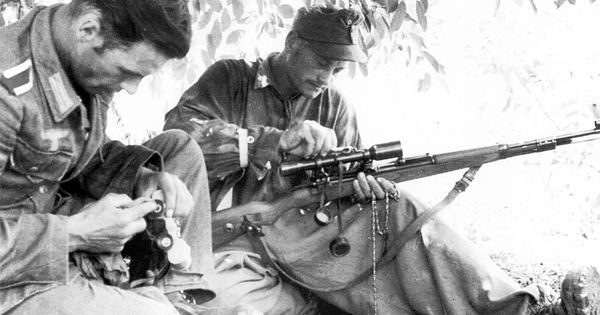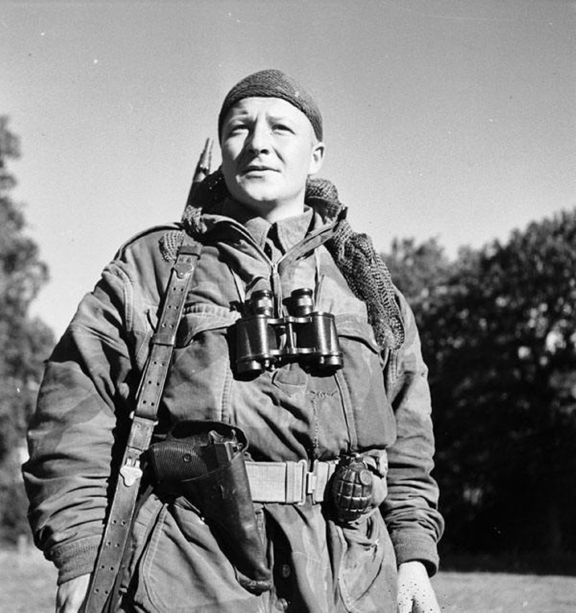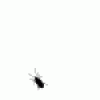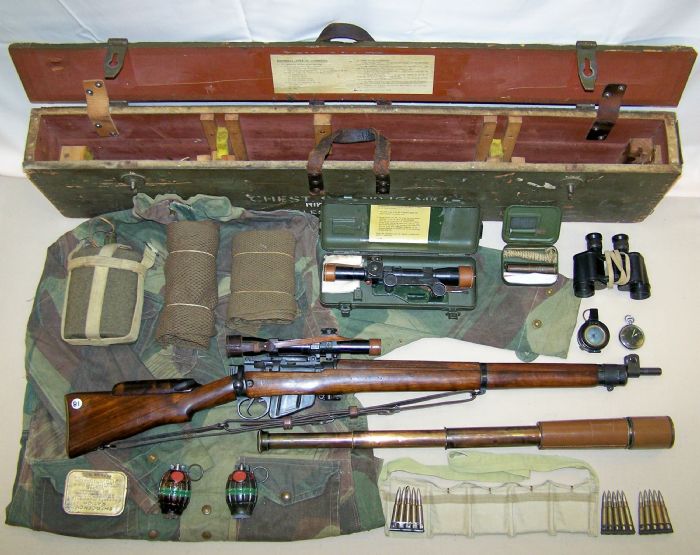Cordite, the reasons you state make sense but I've been told to get 10x as 8x won't be enough for the distances in open exposed Canterbury high country. Surely location and intended use trumps other factors?
Welcome guest, is this your first visit? Create Account now to join.
Welcome to the NZ Hunting and Shooting Forums.
Search Forums
User Tag List
+ Reply to Thread
Results 61 to 75 of 90
-
18-01-2019, 09:12 AM #61Member

- Join Date
- Jan 2019
- Location
- Havelock/Linkwater or Ashburton Lakes
- Posts
- 717
-
-
18-01-2019, 09:37 AM #62
I use 10x42 and have no issues with them.
-
18-01-2019, 06:02 PM #63
Yes, that is all correct and I'm not contradicting anyone else, all I do is point out the physics at play and helping you make your own informed choice. Your main problem with binoculars will be either not bringing them, or not taking yourself out and using whatever ones you buy!!! In then end it is about compromise, even if it is a hybrid solution which I'll come to.
You WILL have perceptible shake if you go above 8x, the binos will get heavier with higher magnification, and you will have less light available to your eyes at higher magnifications. Add that field of view reduces the higher the magnification, so seeing closer may mean noticing less.
See first few paragraphs of this page (actually a 10x42 blurb page) for a discussion of this aspect: https://www.bestbinocularsreviews.co...binoculars.php
As a rule of thumb, if you can see something with your naked eyes (the least stressful way to be "glassing"!) but you are not able to make out what it is, then a 7x bino will help you to identify and study it. On the other hand 10x will help you see something that you won't even notice with your naked eye - provided you look at it at the right time.
Some food for thought, a hybrid solution which you are already planning to pack. For tops, remember that, in addition to your binoculars, you will also carry a usually more powerful high quality monocular on your unloaded bolt-open rifle. Add a rifle bipod for shake-free super close views of very distant objects and you are well covered for a situation where your 7x35's lighter weight, brighter image, wider field, less shaky image won't quite do. OK, you may end up pointing your gun at a tramper 1200 m away, but no harm in that as your rifle will be in a completely safe state.
On a nostalgic note, here's some European tourists, tops hunters I reckon. Definitely 6x30 binos. Not sure exact rifle scope magnification but looks cool. Pre bipod fashion.

Not sure what this guy is hunting, but he's kitted out for dangerous game. Similar 6x30s, but Kershaws not Zeiss going by the screws front.

Edit, just had a closer look, is that a Walther P-38 I see before me?Last edited by Cordite; 18-01-2019 at 06:12 PM.
An itch ... is ... a desire to scratch
-
19-01-2019, 06:03 AM #64Member

- Join Date
- Mar 2017
- Location
- Southland
- Posts
- 1,250
Both 8x and 10x binoculars are ideal and readily available. Which you choose comes down to personal preference. But IMO, the benefits of the extra magnification in the 10x is often overstated. I've had 4 pairs of 10x binos and I'm now running 8.5's. Yes, the 10's offered just that bit extra in magnification, but I doubt you'd be able to see the difference in a simple blindfold test...budum tish.


However, the slightly wider field of view and brightness in the 8x does make a noticeable difference, and for me, it lends itself to a more relaxed view.
The '10x is for tops, 8x for bush' argument isn't accurate. It doesn't take eyesight or glass quality into account, nor somebody's proneness to shake when holding a pair of binos. You'll see more with a 7x with brilliant top drawer glass v.s a 8/10x with mediocre glass. This is the same with rifle scopes and spotting scopes. I don't know why this is - but I guess it's got something to do with higher magnifications using more glass (thicker glass) - and the more you've got of something, the more its weaknesses will be compounded.
As a general rule of thumb, if you want more magnification, it's best to spend more.
The same goes with optical design. If you do not want to spend a lot - DO NOT purchase Roof Prism binoculars (more complicated in design). Pick up a pair of Porro Prism binoculars instead. They'll give you just as good image quality (often better) at a fraction of the price.
If you want to spend less than $1500 on binos, but you'd like $4k worth of optical performance, here's a bino that'll fit the bill:
https://www.jacobsdigital.co.nz/prod...0-w-binoculars
Pros:
1) They're made in Austria by Swarovski - quality.
2) They'll hold their value
3) They won't ever go obselete - they're of a traditional 'porro prism' design
4) They're bomb proof
5) They're better optically (in many respects) compared to expensive Roof Prism binoculars.
6) Reasonably priced
Cons:
1) They're not as ergonomic as a pair of Roof Prism binos.
2) They're not as easy to look through - you've got to take care with positioning your eyes due to limited eye relief and a more primitive eye-cup design.
3) They're not the 'latest and grestest whiz bang' (but does that really matter? They've been around for over 50 years and are time proven).
You've really got to try them first. If they fit you well, they could be the last pair of binos you'll ever need.Last edited by Frodo; 19-01-2019 at 06:13 AM.
-
19-01-2019, 10:04 AM #65
To clarify the porro vs roof prism thing, each has advantages and disadvantages. The prisms are there to upright the image, or you'd have to view game upside down.
The porro prisms are the "old fashioned" style, with a kink in each tube. The wider distance between the objective lenses adds a slight 3D effect on closer objects, but over 50-100metres matters little. The other advantage of the porro is total internal reflection, meaning no need for special mirror coatings to achieve optimal transmission.
Roof prism binoculars (roof prisms are shaped like a house with a tented roof, hence the name) are characterised by their straight tubes, and the roof prism is also smaller (read lighter). The main "disadvantage" of the roof prism is that it does not quite fully achieve internal reflection, so to get around the loss of light from this, some of the prism's external surfaces must be coated with a mirror surface. Cheap ones have aluminium coatings, which do well, but are not as bright as those with silver coatings. There is a lot of expensive hi-tech involved in achieving the best coatings - and in protecting them from corrosion - which add cost. But basically an expensively mirror coated roof prism will achieve the same light transmission as a cheap porro prism with no mirror coating.
If you compare cheap roof prism binos and cheap porro binos with same specs, say fully coated 8x42, the porros will be brighter. Pay more for special prism mirror coatings and enhanced waterproofing to protect the mirror coatings and they have equal brightness. So...
cheap porros bright
cheap roofs darker, but lighter weight
expensive roofs bright, and lighter weight.
They both remain subject to the principle of more magnification thicker lenses, and then wider lenses to regain the lost light.
In regard to weight, lightweight (<500gram) binoculars are lighter than one might suppose, because heavier binos require the added weight of a binocular harness.An itch ... is ... a desire to scratch
-
19-01-2019, 12:39 PM #66Member

- Join Date
- Mar 2017
- Location
- Southland
- Posts
- 1,250
Some really good info there. Cheers for clarifying.

I just thought I'd add: it makes sense for a shop assistant at a hunting store to praise the virtues of a 10x binocular over something with less magnification, because generally you'll pay more for the same model binocular if it's in a higher magnification. Not a lot - but I guess it depends on how keen they are to squeeze every penny out of you.
Glass is all about your eyes and your needs. Some like larger binos, some smaller. Some like extra magnification, some less. Some of us have deeper-set eye sockets and require more eye relief, and vice versa.
There just aren't any concrete rules (other than what Physics dictates i.e a larger exit pupil = more light), and the internet (as useful as it is at times) can be one hell of an echo chamber. Everyone's got an opinion, but at the end of the day, one person's treasure is another person's...
It really is akin to buying shoes. You've gotta try before you buy. Even with the high end models.Last edited by Frodo; 19-01-2019 at 12:59 PM.
-
20-01-2019, 01:20 AM #67
Now to turn your argument on its head.
The light that enters the lens is determined by the objective lens size and the losses are pretty much the same for an 8x or 10x magnification, the difference in lens thickness is very little. So the exit pupil might be smaller, but it will be of higher intensity, so the amount of light getting through is the same. Now if your 8x42's have an exit pupil of 5.25 and your eyes at night have a 5mm pupil then you will get losses going into your eyes of at least 1- (52/5.252) = 9.3% and more if your line of sight is out by more than 0.125mm from the centre. With 10x42's with a exit pupil of 4.2mm your eye need to be more than 0.4mm from the centre of the exit pupil any light is lost.
Physics!There are only three types of people in this world. Those that can count, and those that can't!
-
20-01-2019, 02:10 PM #68
Physics indeed.
In daylight you CAN use say a ridiculously magnifying binocular or monocular of say 25x30, as even with an exit pupil of 30/25 = 1.2mm you will get enough light to see clearly. But what a strain to find that small keyhole of light! Not for prolonged glassing, but fine for just checking something out.
Similarly a pair of 7x50s are comfy to use on the bridge of a ship (no lugging them over hills!) even for a middle aged man with a max pupil diameter of ~5mm. He cannot utilise the 7x50's large exit pupil of 7.14mm, it's just that he can just lift them to his eyes and look without manoeuvring into precise eye alignment. Thus a pair of binos with larger-than-required exit pupils are an advantage not just in very low light, but throughout the day.
Lightness, large exit pupil and wide field of view wins the day every time, but they just don't not go with higher magnification. Can't get both in the same package. Impossible physics in one package.
The solution of carrying some light 7x35s and then using your 3-15x rifle scope for checking out an occasional very distant object works as far as the physics are concerned, with no weight penalty. But it will grate some to use a gun mounted optic for other than aiming though, for obvious reasons of potentially pointing their rifle in the direction of some unwitting passer by, even if unloaded and at a far distance. One might say it dilutes the principle of always pointing a gun in a safe direction. Also, the idea does not work if your rifle scope is a fixed 4x or similar.
The other way to approach it is to use Galilean optics for checking far distant objects. So, say carry a 7x35 bino, and for the occasional far spotting have an extendable type telescope, say 15x or 25x. They're light, compact and reach much further out than any 10x42 or 12x50. But with a narrow FOV they are mainly useful for checking out a specific object, and must be supported as they are usually light weight.
I'd not really go as far as the very heroic monocular (or the Mills bombs) in the kit here ...but the idea is the same: (-:
 An itch ... is ... a desire to scratch
An itch ... is ... a desire to scratch
-
20-01-2019, 02:10 PM #69Member

- Join Date
- Jan 2012
- Location
- Wallacetown
- Posts
- 511
Holy shit, you guys are over thinking things,
i have both 8x and 10x bino's, in the big open country- tops of the south island, i grab the 10x every time,
Why? because they help evaluating potential animals that little bit more, field of view doesn't matter that much as
you should be grid searching the hill face anyway,( i work from top to bottom, then bottom to top) it may take a couple more sweeps of the hill face to complete, than the 8x
but you shouldn't rush this exercise anyway.
if you intend to use in the bush then 8x would be ideal for both situations
it really depends where you are going to use them the most.
you really need to have them side by side in your usual hunting place, and comparing them, to make an informed decision.hunty
6.5x55AI
-
20-01-2019, 02:50 PM #70
-
20-01-2019, 04:45 PM #71Member

- Join Date
- Jan 2012
- Location
- Wallacetown
- Posts
- 511
-
21-01-2019, 01:02 AM #72
I have steady hands and have no issues with using 10x binos, but with the 8-20x50 I had at the Toby shoot I mount them in a tripod if the magnification is wound up. I have not had much experience 'glassing' so far, but have had bino's for many years. I compromised and bought a budget pair of 9x36 hunting binos.
Last edited by gadgetman; 21-01-2019 at 01:18 AM.
There are only three types of people in this world. Those that can count, and those that can't!
-
07-05-2019, 02:00 PM #73Member

- Join Date
- Jan 2019
- Location
- Havelock/Linkwater or Ashburton Lakes
- Posts
- 717
Refreshing this as I now have secure budget of $500 max.
So what 8x42 or 10x42 do you suggest and purchase from where? I'm in Christchurch.
A few I found as maybes
https://www.rubbermonkey.co.nz/Bushn...CategoryId=391
https://www.rubbermonkey.co.nz/Nikon...CategoryId=391
https://www.huntingandfishing.co.nz/...inoculars.html
-
07-05-2019, 03:24 PM #74
I have a pair of Vortex 8x42 Viper HD binoculars that I’ve been using for about a year .
They replaced a pair of Kahles 8x42 that did about 15 years of service .
The Vortex Vipers are more expensive than what your wanting to spend , but I found mine secondhand on eBay basically new for $600 , maybe ask around here if there are any good binoculars ( of any brand ) secondhand floating around among the members.
The quality of the Vortex HD glass really impressed me and to be honest the clarity is right up there with my old Kahles pair which cost alot of money back in the day .
The lifetime warranty that Vortex offers shouldn’t be overlooked either if you do end up buying secondhand.
Good luck with your search .FALL IN LOVE WITH THE NUMBERS , NOT THE IDEA
-
07-05-2019, 09:06 PM #75Member

- Join Date
- Jan 2019
- Location
- Havelock/Linkwater or Ashburton Lakes
- Posts
- 717
Similar Threads
-
2 way radio suggestions
By akaroa1 in forum Gear and EquipmentReplies: 31Last Post: 03-11-2022, 10:47 AM -
Scope suggestions please
By Savage1 in forum Firearms, Optics and AccessoriesReplies: 20Last Post: 18-11-2018, 08:38 PM -
Bumbag suggestions
By Kumoe in forum Gear and EquipmentReplies: 28Last Post: 07-04-2014, 10:55 AM -
Mud tyre suggestions?
By RimfireNZ in forum Outdoor TransportReplies: 28Last Post: 04-03-2013, 06:45 PM
Tags for this Thread
Welcome to NZ Hunting and Shooting Forums! We see you're new here, or arn't logged in. Create an account, and Login for full access including our FREE BUY and SELL section Register NOW!!





 76Likes
76Likes LinkBack URL
LinkBack URL About LinkBacks
About LinkBacks



 Reply With Quote
Reply With Quote



Bookmarks